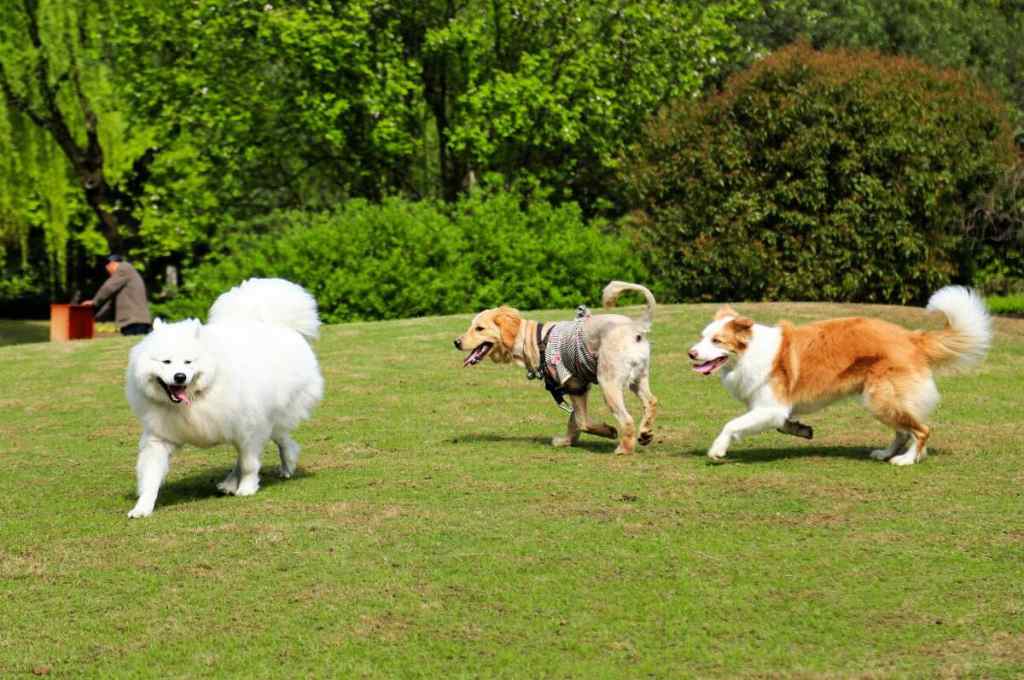 How to raise a Caucasian dog? Do you all want to know how to feed it to be healthy? What can be eaten? Then the following small beans for you to introduce the Caucasian dog feeding method.
How to raise a Caucasian dog? Do you all want to know how to feed it to be healthy? What can be eaten? Then the following small beans for you to introduce the Caucasian dog feeding method.Caucasian Breeding Methods:
Puppies fed on an ad libitum basis from three months onwards, and fed in sufficient quantities for a long period of time on a particularly good quality dog food, can also achieve good results, but the cost of feeding them is relatively higher.
Puppies can be added since the birth of 20 days of dog food, powdered milk, egg yolks and other food, dog food must be soaked in warm water to soften into a paste, feed 6 meals a day, small meals, and at the same time pay attention to the observation of feces to determine the increase or decrease in the amount of food, the puppy 40-50 days to consider weaning, the amount of food at this time should be increased, and add some meat and animal proteins; after 60 days of the puppy can eat dry dog food, feeding After 60 days, the puppy can eat dry food, and the number of times of feeding is gradually reduced; after 90 days, the food can be relatively “rough” a little bit, and always pay attention to calcium supplementation. Caucasian is not a sporty dog breed, big size does not necessarily have a large amount of food, excessive food will cause obesity, as well as gastrointestinal problems, the right amount of high-quality food is a must!
For Caucasians over three months of age, either feed at regular intervals, put out a tub of dry dog food and feed ad libitum, or a combination of both. The Caucasian will reduce its diet during the summer months, so it’s even more important to feed a high-quality food during the summer months and to schedule feedings in the cooler morning and evening hours.
Regarding the feeding of raw meat bones and Russia should be somewhat different, Russia is a frigid region, raw meat bones less parasites, our country is located in the temperate subtropical zone, raw meat bones more parasites, therefore, feeding raw meat bones must go through the process of freezing for a long enough period of time in order to kill the parasites in the raw meat bones.
It can make full use of the characteristics of local feed types and also meet the nutritional needs of the dog. In general, a mixture of animal and plant feeds is appropriate. Commonly used animal feed: meat, fish, eggs, dairy, etc.: plant feed: rice, sorghum, millet, corn, beans, potatoes and vegetables. Therefore, the dog’s feed allocation, must be based on all types of regions and all types of dogs need to be appropriate.
deworming
There is no rule for deworming drugs and time, the most commonly used drug is levamisole, which is usually dewormed once after 20 days of puppy’s birth, then for three days in a row in 30-35 days, and then once again before 60 days. At present, the United Kingdom, the Netherlands and Hong Kong often adopt the following deworming protocol: the first deworming is carried out 2 weeks after birth, and deworming is carried out every 2 weeks from 2 to 8 weeks of age; deworming is carried out once a month from 2 to 6 months of age; deworming is carried out once every three months after 6 months of age. For dogs at 6 months of age who are not sure whether to be dewormed or not, the deworming should generally be repeated after the first deworming, and then every three months thereafter.
Adult dogs every three months deworming, depending on the situation can be appropriate to lengthen the interval, deworming roundworms, such as levamisole, deworming tapeworms to use arsenic quinolone, trichomoniasis with metronidazole, different parasites should be used to choose different deworming medication, in general, if the parasites are more, the feces from the dog can be seen in the type of certain parasites, but trichomoniasis, coccidia need to be determined by microscope laboratory, so deworming must be The right medication should be given to the right person.
vaccinations
Immunization of puppies is critical and is usually done at 28 days of age with a puppy diphtheria or at 45-60 days of age with the first multiplex vaccination, followed by the second and third multiplex vaccination every 25-30 days thereafter. The other way is to do the first multiplex vaccination on the 50th-60th day of life, the second multiplex vaccination on the 80th-90th day, and the third multiplex vaccination at the sixth month. Vaccination should not be done too early, otherwise it will interfere with the immunity of the mother that the puppy carries (except for the Duplex for puppies), and two vaccinations at an interval of less than 15 days will cause the puppy to accumulate too many viruses in the body and lead to serious consequences. Adult dogs should be immunized once a year, or once every six months for kennels with high breeding density.

